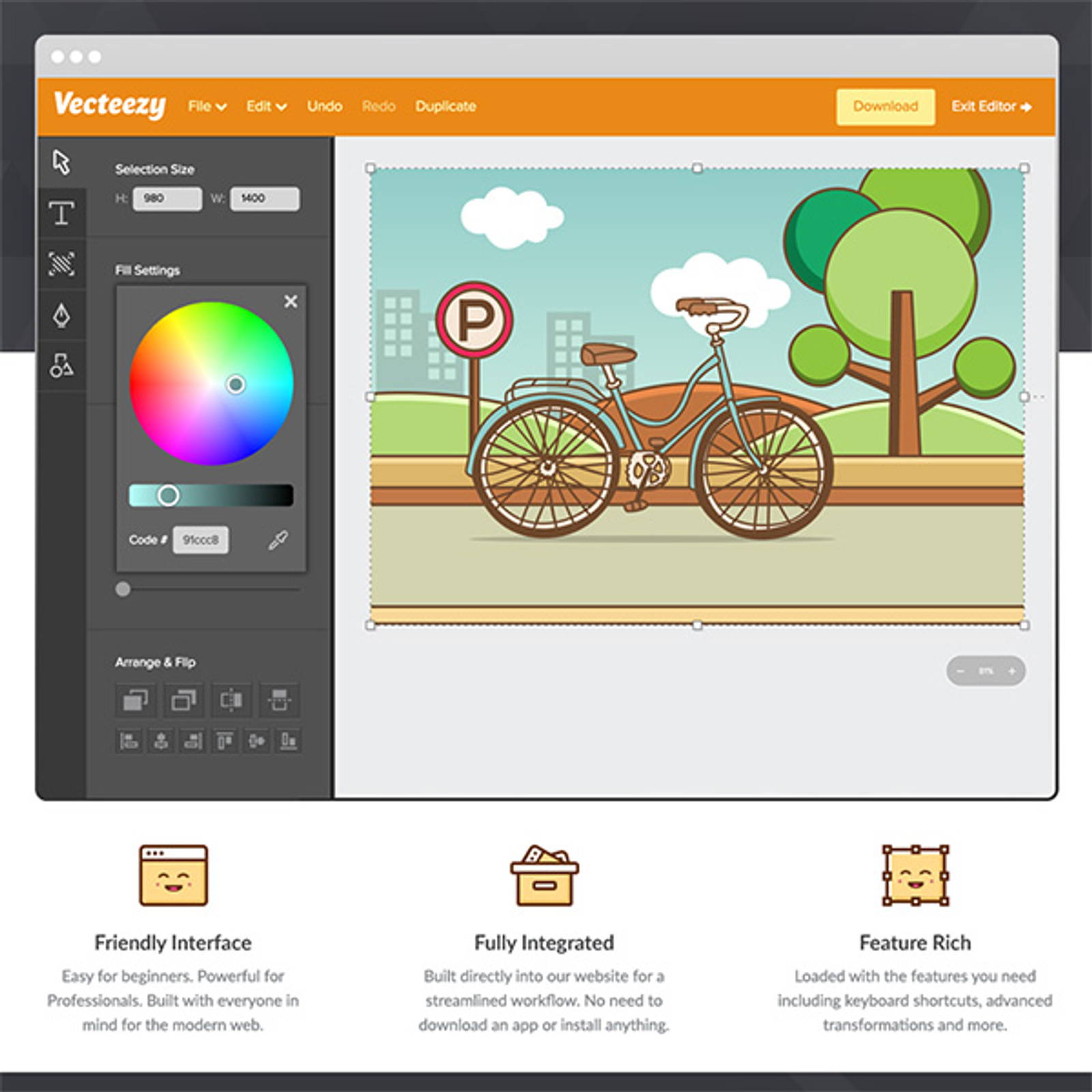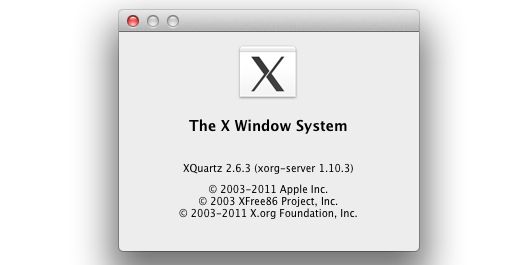| Developer(s) | Jeremy Huddleston Sequoia, X.Org Foundation, Apple Inc. |
|---|---|
| Stable release | |
| Written in | C |
| Operating system | macOS |
| Type | Display server |
| License | Apple Public Source License MIT License |
| Website | www.xquartz.org |
Install the app on your macOS, which is the official X server software for Mac Run Applications Utilities XQuartz.app Right click on the X Quartz icon in the dock and select Applications Terminal. This should bring up a new xterm terminal windows.

XQuartz is an open-source version of the X.Org X server, a component of the X Window System (X11, or shortened to simply X, and sometimes informally X-Windows) that runs on macOS.[1] It formally replaced Apple's internal X11 app. The name 'XQuartz' derives from Quartz, part of the macOS Core Graphics framework, to which XQuartz connects these applications. XQuartz allows cross-platform applications using X11 for the GUI to run on macOS, many of which are not specifically designed for macOS. This includes numerous scientific and academic software projects.[2]
History[edit]
X11.app was initially available as a downloadable public beta for Mac OS X 10.2 Jaguar and later included as a standard package for Mac OS X 10.3 Panther. In Mac OS X 10.4 Tiger X11.app was an optional install included on the install DVD. Mac OS X 10.5 Leopard, Mac OS X 10.6 Snow Leopard, and Mac OS X 10.7 Lion installed X11.app by default, but from OS X 10.8 Mountain Lion on Apple dropped dedicated support for X11.app, with users being directed to the open source XQuartz project (to which Apple contributes) instead.[2]
In Mac OS X 10.4 Tiger, Apple's X11 implemented X11 protocol release 6.6 (X11R6.6). This implementation includes an XFree86 4.4 based X11 window server, Quartz rootless window manager, libraries, and basic utilities such as xterm.[3] 'Rootless' means that X window applications show up on the Quartz desktop, appearing like any other windowed Quartz application (that is, not in a virtual desktop contained within another window). In Mac OS X Leopard, X11 was updated to use X.Org Server (X11R7.2) rather than XFree86.[4] The source code for X11 is available from Apple. Some source code is available under the Apple Public Source License while the bulk is licensed under the MIT License.
Current version[edit]
The current version of XQuartz is a DDX (Device Dependent X[5]) included in the X.Org Server and implements support for hardware-accelerated 2D graphics (in versions prior to 2.1), hardware OpenGL acceleration and integration with Aqua, the macOS graphical user interface (GUI). As of version 2.7.11, XQuartz does not provide support for high-resolution Retina displays to X11 apps, which run in pixel-doubled mode on high-resolution displays.

List of versions (since 2010)[edit]
| Version[6] | macOS Requirement | Most important changes | Release date |
|---|---|---|---|
| XQuartz 2.7.11 | Mac OS X Snow Leopard 10.6.3 or later | 2016-10-29 | |
| XQuartz 2.7.10 | Mac OS X Snow Leopard 10.6.3 or later | 2016-10-22 | |
| XQuartz 2.7.9 | Mac OS X Snow Leopard 10.6.3 or later | 2016-05-05 | |
| XQuartz 2.7.8 | Mac OS X Snow Leopard 10.6.3 or later | First release supported on OS X El Capitan | 2015-10-17 |
| XQuartz 2.7.7 | Mac OS X Snow Leopard 10.6.3 or later | First release supported on OS X Yosemite | 2014-08-18 |
| XQuartz 2.7.6 | Mac OS X Snow Leopard 10.6.3 or later | 2014-05-17 | |
| XQuartz 2.7.5 | Mac OS X Snow Leopard 10.6.3 or later | First release supported on OS X Mavericks | 2013-11-10 |
| XQuartz 2.7.4 | Mac OS X Snow Leopard 10.6.3 or later | 2012-09-27 | |
| XQuartz 2.7.3 | Mac OS X Snow Leopard 10.6.3 or later | 2012-08-27 | |
| XQuartz 2.7.2 | Mac OS X Snow Leopard 10.6.3 or later | First release supported on OS X Mountain Lion | 2012-06-01 |
| XQuartz 2.7.1 | Mac OS X Snow Leopard 10.6.3 or later | 2012-06-01 | |
| XQuartz 2.7.0 | Mac OS X Snow Leopard 10.6.3 or later | First release supported on Mac OS X 10.7 Lion | 2011-11-04 |
| XQuartz 2.6.3 | Mac OS X Snow Leopard 10.6.3 or later | 2011-07-20 | |
| XQuartz 2.6.2 | Mac OS X Snow Leopard 10.6.3 or later | 2011-04-30 | |
| XQuartz 2.6.1 | Mac OS X Leopard 10.5.8, Mac OS X Snow Leopard 10.6.3, or later | 2011-03-17 | |
| XQuartz 2.6.0 | Mac OS X Leopard 10.5.8, Mac OS X Snow Leopard 10.6.3, or later | 2010-12-19 | |
| XQuartz 2.5.3 | Mac OS X Leopard 10.5.8, Mac OS X Snow Leopard 10.6.3, or later | 2010-08-13 | |
| XQuartz 2.5.2 | Mac OS X Leopard 10.5.8, Mac OS X Snow Leopard 10.6.3, or later | 2010-07-20 | |
| XQuartz 2.5.1 | Mac OS X Leopard 10.5.8, Mac OS X Snow Leopard 10.6.3, or later | 2010-07-10 | |
| XQuartz 2.5.0 | Mac OS X Leopard 10.5.8, Mac OS X Snow Leopard 10.6.3, or later | First release supported on Mac OS X Snow Leopard | 2010-03-29 |
See also[edit]
- MacX, X11 support on Classic Mac OS
- XWayland, to support X application under Wayland
- XDarwin, an implementation of X for macOS that preceded XQuartz, and supports versions of macOS before 10.3 unlike XQuartz
References[edit]
- ^'XQuartz'.
- ^ ab'Apple Removes X11 in OS X 10.8 Mountain Lion, Shifts Support to Open Source XQuartz'. Retrieved September 14, 2016.
- ^'XQuartz'. September 14, 2016.
- ^'Inside Leopard: Under-the-hood, Page 2'. Macworld. November 2, 2007. Retrieved June 30, 2020.
- ^'Glossary'. www.x.org. Retrieved September 15, 2016.
- ^'XQuartz - Releases Archive'. www.xquartz.org. Retrieved January 22, 2017.
External links[edit]
Latest Version:
XQuartz 2.7.11 LATEST
Requirements:
May 15, 2020 The El Capitan installer is downloaded to the /Applications folder, with the file name Install OS X El Capitan. If you have already installed El Capitan and wish to now create a bootable installer, you can force the Mac App Store to re-download the installer. Os x el capitan download.
Mac OS X 10.6 or later
Author / Product:
XQuartz Team / XQuartz for Mac https://samgol.netlify.app/symantec-vip-for-mac-mojave.html.
Old Versions:
Filename:
XQuartz-2.7.11.dmg
MD5 Checksum:
8e9dbfe2717c8d74c262b3a963597898
Details: https://omgearly.netlify.app/appcleaner-for-mac-el-capitan.html.
Paint for mac mojave. XQuartz for Mac 2020 full offline installer setup for Mac
The updates available on this site are not official Apple releases. They are a convenient way for users to stay up to date with progress made in the open source community (in which Apple is participating). Official Apple releases will come from Apple (most likely through OS and Security Updates via Software Update). These updates will likely incorporate many of the changes made in releases when and if Apple deems them appropriate.
X11 is no longer included with Mac, but X11 server and client libraries are available from the app project. X11 server and client libraries for macOS are available from the XQuartz project!
Apple created the app project as a community effort to further develop and support X11 on Mac. The XQuartz project was originally based on the version of X11 included in Mac OS X v10.5. There have since been multiple releases of XQuartz for macOS with fixes, support for new features, and additional refinements to the X11 experience. Apple is a contributor to the XQuartz project and has worked to ensure that X11 works as expected with macOS and latest available versions of the tool.
How do I use XQuartz on Mac?
- Install the app on your macOS, which is the official X server software for Mac
- Run Applications > Utilities > XQuartz.app
- Right click on the X Quartz icon in the dock and select Applications > Terminal. This should bring up a new xterm terminal windows.
- In this xterm windows, ssh into the linux system of your choice using the -X argument (secure X11 forwarding). For example, to log into hulk.soic.indiana.edu you would run something like ssh -Y [email protected]
- Once you are logged into the linux system, you can just run the GUI program of your choice (ie. matlab, mathematics, etc) and it will display on your Mac.



